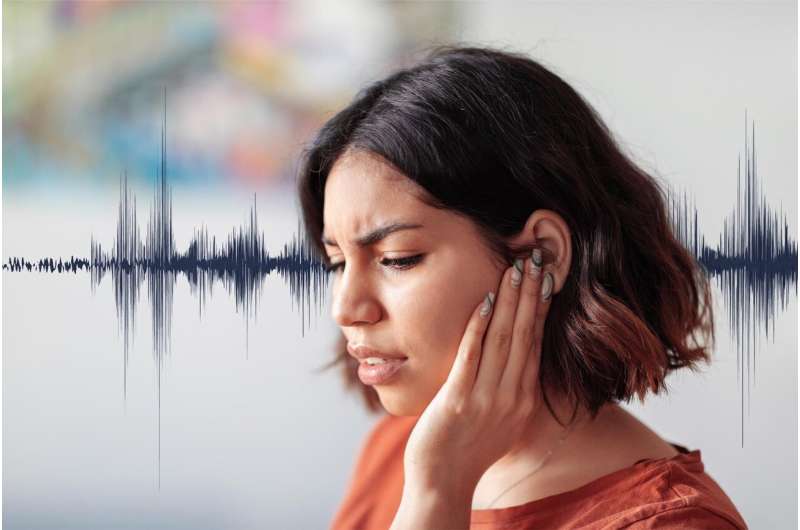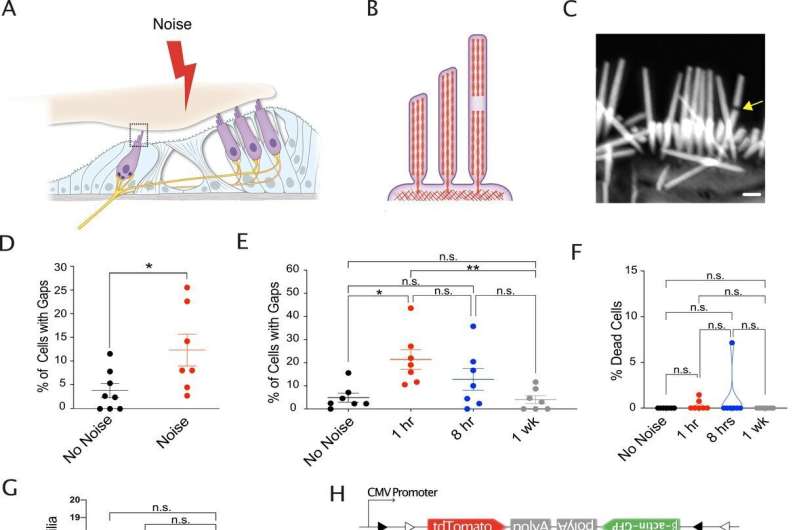This article has been reviewed according to Science X's editorial process and policies. Editors have highlighted the following attributes while ensuring the content's credibility:
fact-checked
peer-reviewed publication
trusted source
proofread
Scientists discover repair process that fixes damaged hearing cells

University of Virginia School of Medicine researchers have discovered how cells that let us hear can repair themselves after being damaged, an insight that could benefit efforts to treat and prevent hearing loss.
"Hair cells" found in the inner ear are important both for the ability to hear and for a sense of balance. They are known as hair cells because they are covered in hair-like structures that serve as mechanical antennas for sound detection. When auditory hair cells are killed, they are gone for good, but the new UVA Health research shows these delicate cells can repair themselves from damage caused by loud noises or other forms of stress.
For many years, research has focused on regeneration of sensory hair cells. Although those efforts continue, it is equally important to better understand the mechanisms that govern repair and maintenance of the cells, said researcher Jung-Bum Shin, of UVA's Department of Neuroscience.
"By gaining a deeper understanding of these inherent repair processes, we can uncover strategies to fortify them effectively," Shin said.
One future approach may use drugs to stimulate cell repair, he said.
"When replacement of hair cells proves challenging, the focus shifts toward repairing them instead. This dual strategy of regeneration and repair holds strong potential in advancing treatments for hearing loss and associated conditions," Shin said.

Hearing repair
Hair cells are naturally fragile. They must be delicate so they can sense sound, but they must also withstand the continuous mechanical stress inherent in their jobs.
Prolonged exposure to loud noise harms hair cells in a variety of ways, and one of those is by damaging the cores of the "hairs" themselves. These hair-like structures are known as stereocilia, and Shin's new research shows a process they use to repair themselves.
The hair cells deploy a protein called XIRP2, which can sense damage to the cores that are made of a substance called actin. Shin and his team found that XIRP2 first senses damage, then migrates to the damage site and repairs the cores by filling in new actin.
This process is also relevant to the broader study of cell biology, Shin said.
Shin and his colleagues will perform additional research into how the cores are repaired. By understanding this, scientists will be better positioned to develop new ways to battle hearing loss—even loss due to aging, the researchers say.
"Age-related hearing loss affects at least a third of all older adults," Shin said. "Understanding and harnessing internal mechanisms by which hair cells counteract wear and tear will be crucial in identifying ways to prevent age-related hearing loss. Furthermore, this knowledge holds potential implications for associated conditions such as Alzheimer's disease and other dementia conditions."
The researchers published their findings in the journal eLife.
More information: Elizabeth L Wagner et al, Repair of noise-induced damage to stereocilia F-actin cores is facilitated by XIRP2 and its novel mechanosensor domain, eLife (2023). DOI: 10.7554/eLife.72681


















